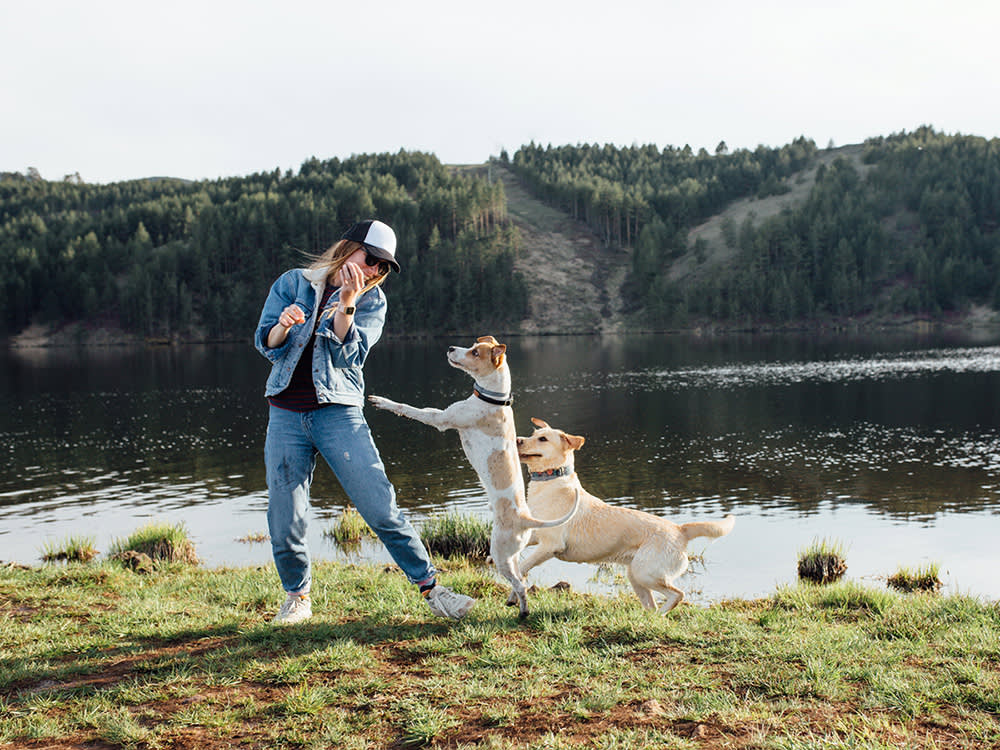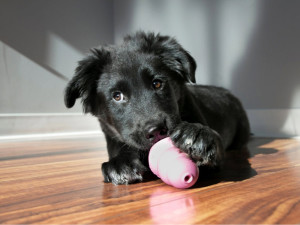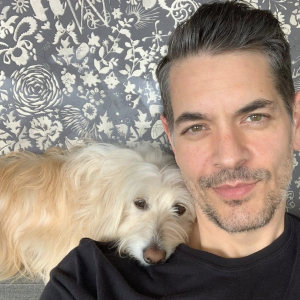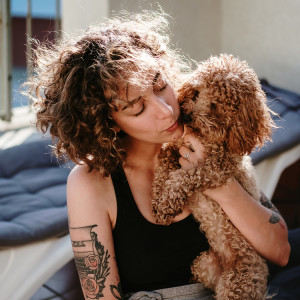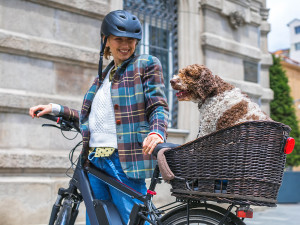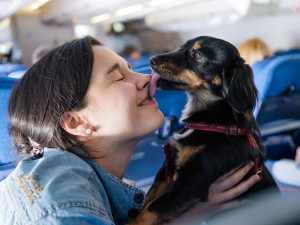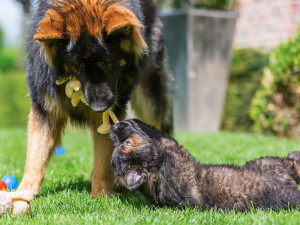“How Can I Calm My Super-Jumpy Dog?”
Dog trainer Robert Haussmann’s pro tips for getting a hyped-up dog to chill out
Bandit has always been a very energetic dog. He gets so hyper and can’t control himself. It has ended up with him mildly injuring my husband and me. I really need to teach him self-control. We just can’t seem to ever get enough energy out, no matter how many walks or playtimes. I’m desperate! – Anna
Hey Anna!
littleKin™ is Kinship’s home just for puppy and kitten parents. Bop over to check out expert advice, new pet tools, and special deals—all curated for your newest family member.
opens in a new tabAn over-excited dog can easily overwhelm their pet parents. Besides the fact that it can make many activities challenging, it can also become a downright dangerous situation. The possibility of knocking people over, scratching, nippingopens in a new tab or even inadvertently head-butting someone who is bending down to greet them can make this issue a real liability. If you add young children or elderly people into the mix, it can be an accident waiting to happen. The key is prevention. Here are some simple tools you can use to prevent over-excitement.
Physical exercise
Exercise is very important, but it’s only the tip of the iceberg when it comes to a dog who’s overly energetic. Adding alternative forms of exercise such as mental stimulation and environmental enrichment are critical to keep the energy at bay.
Mental stimulation
This engages your dog in problem-solving techniques, binds anxiety/energy and improves communication. It can be incorporated daily into your normal home routine. Consistently practising basic obedience cues opens in a new taband incorporating those skills into your daily routine is a great way to reinforce what your dog already may know and also introduce them to some new training protocols. Keep the training fun and consistent. Make sure to mix it up so your dog remains interested and you keep them on their toes.
Environmental enrichment
This can be done with interactive feeding toysopens in a new tab, which engage your dog in foraging and dissecting behaviours while consuming their daily meals. Another option is playing a game of hide and seek with some treatsopens in a new tab hidden around the house. Scent tracking games are a lot of fun as well. There are also a lot of great chew toysopens in a new tab out there that can help your dog bind some of that anxiety and/or extra energy through rigorous chewing.
Despite your best efforts, an over-excited dog may still go totally wild when guests arrive or if your kids start running around the house. This may take a specific approach that includes teaching self-control and implementing a management plan.
Teaching self control
Your first priority should be to reinforce and practise your basic foundation skills. Make sure Bandit has a good grip on basic cues such as “sit”, “come”, “stay”, “go to your mat” etc. If he seems to be struggling, find a basic obedience or manners classopens in a new tab or hire a professional dog trainer for some private lessons. Be sure to do your research and seek out trainers who are certified and practise positive reinforcement techniques.
Once Bandit has the basics down, you want to focus on teaching him how to stay calm while exciting things are happening in his environment. Start by teaching Bandit to go to a dog bedopens in a new tab or mat on cue – choose a designated spot that he can be instructed to “go to mat”. Once he’s eagerly complying, ask him for a “stay”. Do this several times while you slowly increase your distance as you move away from him. Slowly increase the duration of time you expect him to “stay”. The next step is to introduce some distractions around him during his “stay”. Make sure to reward him for completing the task with a high-value food treat and positive praise.
Once he can go to his mat and stay for 20 to 30 seconds, add more and more challenging distractions. Clap your hands, jump up and down, sit on the floor, sing at the top of your lungs – you get the idea. Over the course of a few weeks, you want to be able to build up to knocking at the door, ringing the doorbell, eating on the floor, running back and forth etc, the idea being that you can help Bandit control himself by teaching him to eagerly perform an incompatible behaviour and desensitising him to exciting environmental triggers.
Make over-excitable behaviour unsuccessful
Throughout your training journey, it’s inevitable that Bandit will get up to his old tricks and occasionally go nuclear when you’re answering the door or greeting a friend while out on a walk. We’ll need to respond to his behaviour in a way that helps him realise that we don’t appreciate it. Dogs will always repeat behaviours that are successful to them. If jumping, barking or grabbing at clothes gets all the attention in the room directed towards him, he’ll see this as very fruitful. Even negative attention is still attention.
Use time-outs
Time-outs are an effective way to show him his hyperactive behaviours are working against him. When he exhibits these behaviours, calmly remove him from the room. In cases where you can predict a situation where you know he’ll get overstimulated, employ the use of a house lead which he can drag around indoors. This way, the moment he jumps, you can say “too bad” and escort him to a bathroom or bedroom using the lead. Time-outs should be short. Fifteen or 30 seconds of isolation from the provoking stimulus will do. If he comes out all jazzed up and repeats the behaviour, immediately repeat the time-out steps again. He shouldn’t be able to engage in the stimulating activity until he’s noticeably calmed down. Avoid yelling or being too forceful while going through this new ritual, as this will only add excitement and frustration to the situation and probably exacerbate his behaviour.
Reward appropriate behaviour
If you’re out for a walk and he gets het up over someone you meet, you can remove him from the person the moment he begins his excitable behaviours. Move back by about three to five feet, redirect his behaviour and then re-approach the person when he’s calm. Repeat as needed. Be sure to praise and reward Bandit for appropriate behaviour. It’s not enough to tell him what not to do; you need to let him know when he is doing things well.
Prioritise training exercises
It’s important to realise that while time outs can be effective, they won’t be enough on their own. The training exercises should be your focus. If he can learn how to control his enthusiasm in a controlled and manageable setting, you’ll do much better than relying on time outs alone. Especially in a setting where the stakes are high and you’re too distracted and he’s too excited.
Remember: you’re teaching, not testing. Go slow and work at Bandit’s pace. This is going to take some time. Be patient as he already has a default behaviour that he has been practising with varied success for some time. It will be challenging for him to suddenly stop his excitable behaviour and switch gears, but with knowledge, patience and perseverance, you should see steady progress. Practice makes progress. Happy training!
